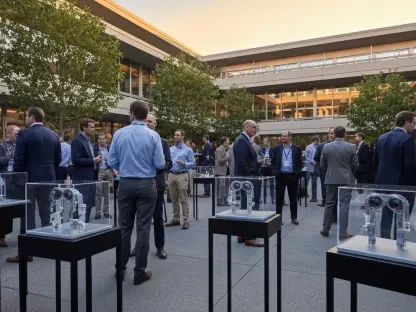In the wake of a post-pandemic travel surge, with global tourist arrivals exceeding pre-COVID levels by mid-2025, the tourism industry stands as both a beacon of economic recovery and a source of mounting concern. The promise of sustainable tourism—balancing the thrill of exploration with environmental care, social equity, and local prosperity—has become a buzzword across the globe. Yet, beneath the polished campaigns and eco-friendly labels lies a troubling question: can an industry fueled by relentless growth truly align with the principles it champions? This exploration dives into the stark contradictions of sustainable tourism, peeling back layers of idealism to reveal environmental damage, social unrest, and economic inequity. It challenges the notion that quick fixes or green initiatives can address deep-rooted issues, urging a closer look at whether tourism enhances or exploits the very destinations it celebrates.
Environmental Strain Under the Tourist Boom
The environmental cost of tourism casts a long shadow over its economic allure, with the industry contributing roughly 8% to global greenhouse gas emissions. Fragile ecosystems bear the brunt of this impact, as seen in the overcrowding of national parks in places like Costa Rica, where natural beauty draws millions but strains resources beyond capacity. Even drastic measures, such as the temporary closure of Boracay in the Philippines due to ecological devastation from unchecked development, highlight the scale of the crisis. While eco-friendly initiatives—think biodegradable straws or solar-powered lodges—gain traction, they often pale against the sheer volume of travelers. The numbers tell a sobering story: demand continues to outpace conservation efforts, leaving landscapes vulnerable. Is it possible for sustainability to thrive when the industry’s core model prioritizes quantity over quality, or are these green efforts merely cosmetic in the face of systemic overload?
Delving deeper into this ecological dilemma, the tension between preservation and profit becomes glaringly apparent. Air travel alone, a cornerstone of global tourism, generates carbon footprints that offset programs struggle to neutralize effectively. Destinations marketed as pristine often suffer the most—think coral reefs trampled by snorkelers or mountain trails eroded by endless foot traffic. Governments and organizations push for “green” certifications to signal responsibility, yet enforcement remains inconsistent, and many operators lack the funds to comply with stringent standards. Meanwhile, the public’s appetite for exotic getaways shows no sign of waning, fueled by social media and budget airlines. This creates a vicious cycle: the more a place is loved, the more it risks being destroyed. Without a fundamental shift in how travel is structured, the dream of sustainable tourism risks becoming a hollow promise, outpaced by the very growth it seeks to manage.
Social Tensions in Overcrowded Destinations
On the social front, tourism often sows discord rather than harmony, particularly in cities overwhelmed by visitors, where local resentment has earned the term “tourismophobia.” Urban centers like Barcelona and Venice exemplify this struggle, as short-term rental platforms drive housing costs skyward, displacing residents who can no longer afford to stay. Cultural identity erodes when historic neighborhoods morph into tourist playgrounds, with authentic local shops replaced by souvenir stalls. Policies aimed at curbing the chaos, such as Venice’s 2024 entry fee, attempt to manage crowds but face criticism for turning a systemic issue into a revenue stream. The core problem persists: the needs of transient visitors frequently overshadow the rights of permanent residents. How can tourism claim to be sustainable when it fractures the social fabric of the places it touches?
Beyond mere inconvenience, the social fallout of overtourism reveals a deeper clash of values and priorities. In many destinations, the influx of travelers disrupts daily life—think packed public transport or sacred sites turned into photo ops—leaving locals feeling like strangers in their own homes. Community backlash often grows, with protests erupting over the loss of public spaces to commercial interests catering to tourists. While some argue that tourism fosters cultural exchange, the reality is often one-sided, with host communities adapting to foreign expectations at the expense of their traditions. Efforts to involve locals in decision-making remain sporadic, and without genuine dialogue, tensions simmer. Sustainable tourism must grapple with this human cost, recognizing that social equity isn’t just a checkbox but a cornerstone of any meaningful progress in the industry.
Economic Imbalances and Profit Leakage
Economically, the narrative of tourism as a savior for struggling regions often unravels under scrutiny, exposing stark disparities in who truly benefits. According to the United Nations Environment Programme, a mere $5 of every $100 spent by tourists in developing countries stays within the local economy—the rest “leaks” back to international corporations. This leakage undermines the argument that tourism inherently uplifts host communities, instead perpetuating global inequities. Local workers frequently face low-wage, seasonal employment with little job security, while multinational chains reap the lion’s share of profits. The economic promise of tourism, so often heralded as a path to prosperity, begins to look more like a mirage when the numbers reveal such uneven distribution of gains. Can this model ever deliver true sustainability?
Further examination of this economic conundrum shows that the benefits of tourism are not just uneven but often actively detrimental to long-term local growth. Small businesses in tourist-heavy areas struggle to compete with global brands that dominate markets, from hotel chains to tour operators, leaving little room for indigenous entrepreneurship. In many cases, infrastructure development caters to visitors—think luxury resorts over affordable housing—rather than addressing community needs. Even when revenue does trickle down, it’s rarely reinvested into education or healthcare, which could build lasting resilience. The result is a dependency on an industry prone to fluctuations, as seen in post-pandemic recovery challenges. Sustainable tourism demands a rethinking of economic structures, ensuring that financial benefits are retained locally and prioritized for systemic improvement rather than fleeting gains.
Flawed Solutions and the Greenwashing Risk
Turning to proposed solutions, the industry often leans on technology and policy as silver bullets, though their impact remains questionable at best. Innovations like AI for optimizing hotel energy use or virtual travel experiences aim to lessen environmental harm, yet they risk turning cultural heritage into a commodity while dodging structural issues. Carbon offsetting for flights and eco-certifications, meanwhile, draw ire for favoring large corporations with the means to comply, sidelining smaller, local operators. Critics point to greenwashing—where superficial measures mask ongoing damage—as a pervasive problem. These tools, while promising on paper, often serve as distractions from the urgent need for comprehensive reform. Are they genuine steps forward, or merely ways to appease a conscience without tackling the root of the issue?
Scrutinizing these fixes further, it becomes clear that many lack the depth to address tourism’s sprawling challenges. For instance, virtual travel might reduce physical footprints, but it can’t replicate the economic injection of real visitors, nor does it prevent cultural misrepresentation online. Similarly, policy interventions like tourist taxes or quotas face enforcement hurdles and often alienate stakeholders who feel excluded from planning. The bias toward larger players in certification schemes exacerbates inequality, as small businesses struggle with bureaucratic costs. Meanwhile, marketing campaigns touting sustainability can mislead travelers into believing their impact is negligible, perpetuating overconsumption. True sustainability requires transparency and accountability, not just innovation for innovation’s sake, but a commitment to solutions that prioritize systemic change over short-term optics.
Rethinking Tourism for a Regenerative Future
Amid the critiques, a compelling vision emerges: shifting tourism from a growth-obsessed model to one of regeneration. Sustainability isn’t a static target but an evolving process, demanding adaptive, community-driven strategies. Iceland’s use of data models to balance tourist flows around vulnerable landscapes offers a blueprint, as does the Bahamas’ Sustainable Island Challenge, which tailors waste management and renewable energy to small island realities. These initiatives prove that localized solutions can work, yet they remain exceptions in an industry still fixated on visitor numbers as the ultimate metric of success. The challenge lies in scaling such efforts without losing their grassroots essence. Could this regenerative approach redefine tourism’s purpose, prioritizing long-term value over short-term profit?
Reflecting on this transformative potential, it’s evident that regeneration requires more than isolated projects—it demands a cultural shift within the industry. Empowering local communities as active partners, rather than passive recipients, is critical, ensuring their voices shape policies and profits. Education also plays a role, encouraging travelers to seek meaningful engagement over fleeting experiences, perhaps by supporting lesser-known destinations. Governments and businesses must align incentives, redirecting funds from mass marketing to conservation and infrastructure that benefits residents first. While these steps are daunting, the small-scale successes of recent years provide a foundation. Looking back, the journey to redefine tourism was fraught with missteps, but it also sparked vital conversations about balance and equity, paving the way for a future where travel could heal rather than harm.









